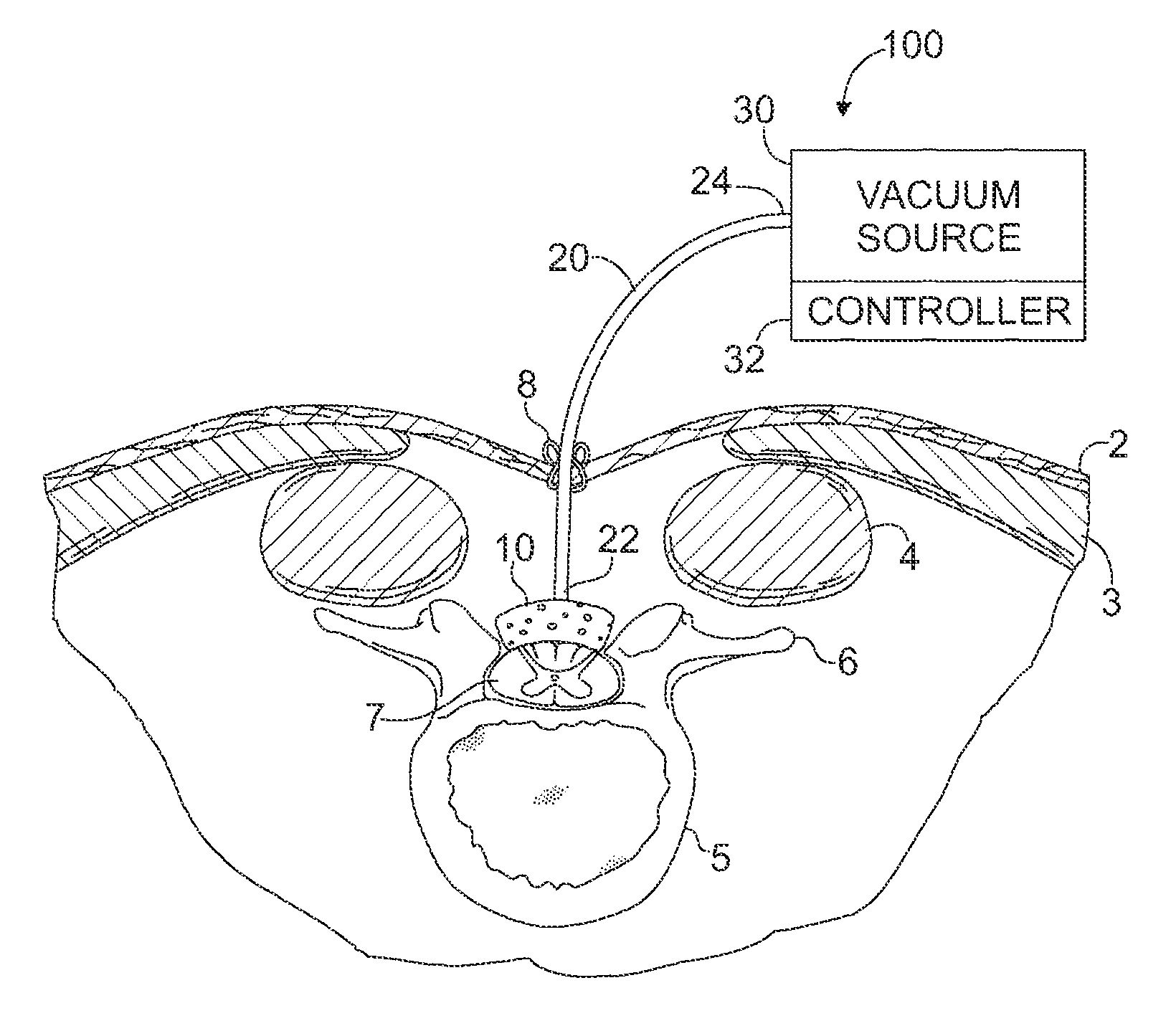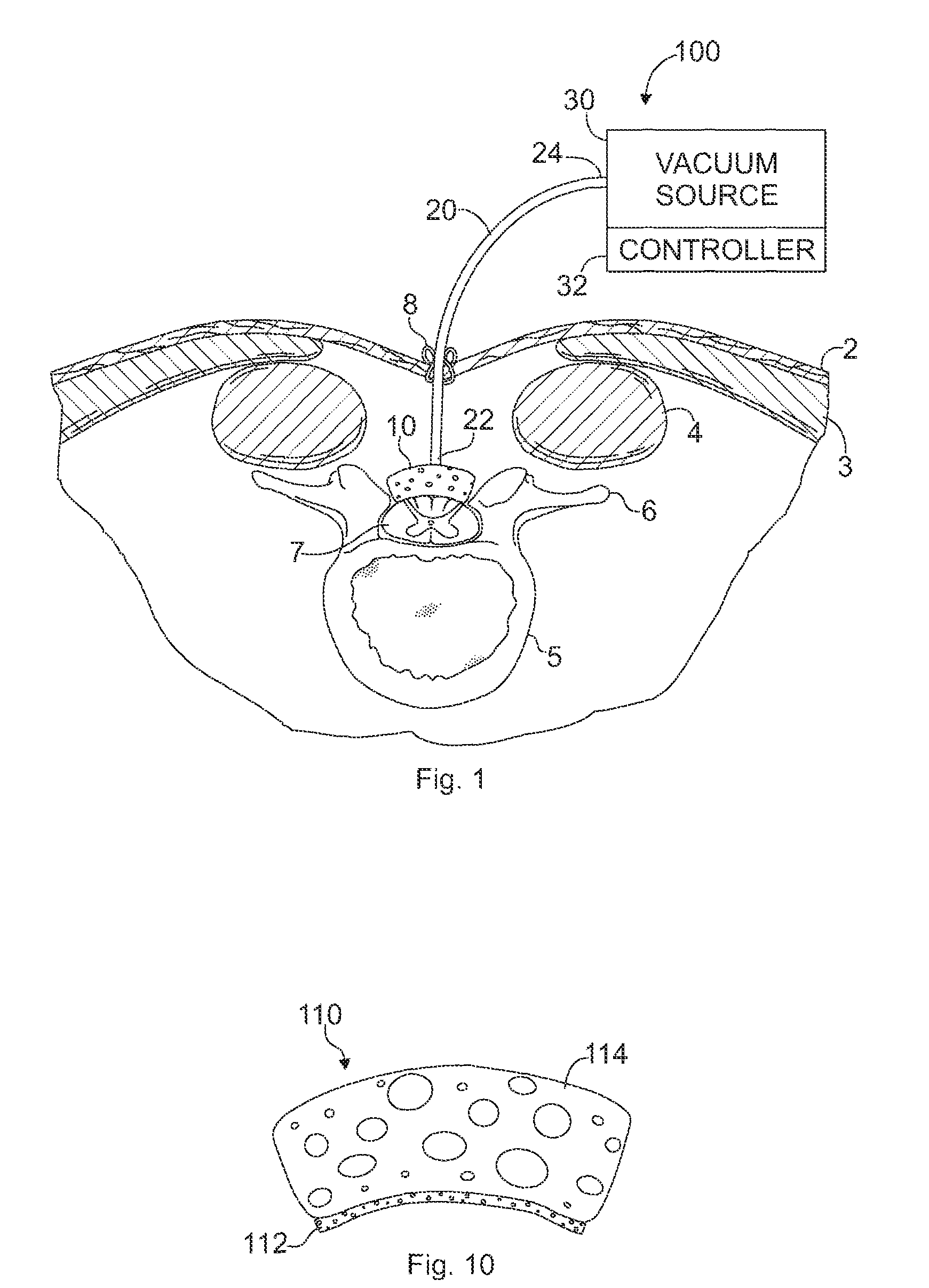Devices and methods for treating spinal cord tissue
a technology for spinal cord tissue and devices, applied in the field of devices and methods for treating spinal cord tissue, can solve problems such as non-recoverable injuries, achieve the effects of minimizing the progression of pathologic processes, minimizing the disruption of physiological spinal cord integrity, and minimizing the interference with spinal cord blood flow
- Summary
- Abstract
- Description
- Claims
- Application Information
AI Technical Summary
Benefits of technology
Problems solved by technology
Method used
Image
Examples
examples
Rat Spinal Cord Injuries and Sub-Atmospheric Pressure Exposure
experiment 1
[0045]A series of experiments were conducted to determine the effects of sub-atmospheric pressure on the spinal cord in rats post contusion injury. In a first animal protocol, 250-300 gram Sprague Dawley rats were obtained and the model of spinal contusion developed and verified. The procedure for creating the injury and assessing recovery was based upon the description of spinal cord contusion injury in Wrathall, et al., Spinal Cord Contusion in the Rat: Production of Graded, Reproducible, Injury Groups, Experimental Neurology 88, 108-122 (1985). The surgical technique was developed for exposing the spinal cord in the anesthetized rats and consistent production of a contusion injury by dropping a cylindrical 10 gram weight through a glass tube from a height of 5 cm. Half of the rats were untreated controls while the other half had the area of contusion exposed to 4 hours of sub-atmospheric pressure (25 mm Hg below atmospheric). However, the degree of injury did not produce a signif...
experiment 2
[0046]A second protocol was developed in which a more severe injury was inflicted on the spinal cord (a 10 gram weight was dropped from a higher height—7.5 cm). Twenty-eight large (300 gram) Sprague Dawley rats were procured over time and allowed to acclimate to housing conditions. On the day of surgery, the animals were sedated and the back shaved and scrubbed for surgery. A midline incision made over the spine was made extending through the skin and subcutaneous tissue and the cutaneous maximus muscle and fascia exposing the deeper back muscles. The paired muscles that meet at the midline (trapezius and potentially latisimus dorsi) were separated at the midline and retracted laterally. The deep ‘postural’ muscles such as the spinotrapezius and / or the sacrospinal muscles that are attached to the bony structures of the spine itself were also divided on the midline and retracted laterally. This exposed the spinous process and potentially some of the transverse processes. At the level...
PUM
 Login to View More
Login to View More Abstract
Description
Claims
Application Information
 Login to View More
Login to View More - R&D
- Intellectual Property
- Life Sciences
- Materials
- Tech Scout
- Unparalleled Data Quality
- Higher Quality Content
- 60% Fewer Hallucinations
Browse by: Latest US Patents, China's latest patents, Technical Efficacy Thesaurus, Application Domain, Technology Topic, Popular Technical Reports.
© 2025 PatSnap. All rights reserved.Legal|Privacy policy|Modern Slavery Act Transparency Statement|Sitemap|About US| Contact US: help@patsnap.com



